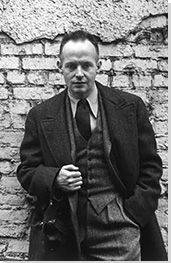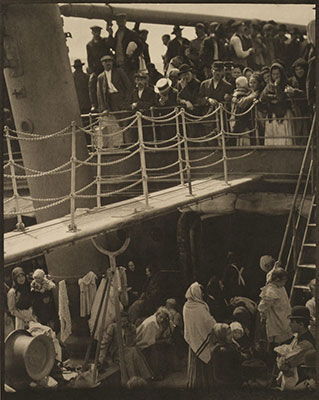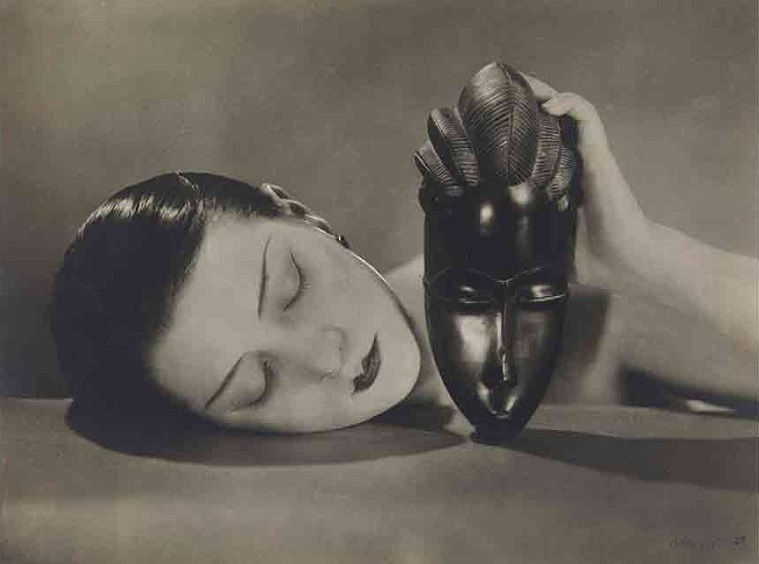Summary of Henri Cartier-Bresson
Cartier-Bresson's work spanned photographic genres for the entirety of his long career. He is regarded as a pioneer of candid and street photography but he is also well-known for having produced some of the most compelling photographic portraits of notables ranging from Jean-Paul Sartre and Leonard Bernstein to Marilyn Monroe and Malcolm X. An early user of 35mm film, Cartier-Bresson preferred never to use the darkroom to adjust his photographs, a choice that enhanced the spontaneity of his images and emphasized what he called "the decisive moment." No single photographer is more closely linked to the development of modern photojournalism than is Cartier-Bresson, whose itinerant nature brought him to some of the most momentous events and sites in modern history - from the liberation of Paris from Nazi occupation to the assassination of Mahatma Ghandi.
Accomplishments
- To enhance his capacity to take the kind of candid shots he preferred, Cartier-Bresson often wrapped his Leica camera in black tape to make it less obtrusive. Assuming the role of the modern flâneur, his camera became an extension of his eye as he wandered, seeking visually, psychologically, and intellectually stimulating visual material. Ironically, while Cartier-Bresson could linger for hours observing, patiently awaiting the perfect shot, he was always poised to make the snap decisions required to seize a given moment to fix in time.
- Cartier-Bresson co-founded The Magnum Photo agency - a cooperative owned by its members -that connected the photographers with clients around the world. The agency's mission was to widely disseminate photographs that were in one way or another exemplary of the modern era and also inherently humanitarian.
- In addition to still photography, Cartier-Bresson was an accomplished filmmaker, who first became interested in the medium when he worked with Jean Renoir. His filmography includes nearly ten films and he is regarded as an influential figure in the development of cinéma verité.
- Cartier-Bresson's earlier inclination toward painting endured even after he stopped painting to pursue a long and fruitful career in photography. While he didn't return to producing canvases actively until late in life, the formal training informed his photography, disciplined his eye, and compelled him not only to continue to cultivate relationships with the notable, avant-garde painters of his era but also to regard his own photographic style as a kind of nexus between painting and photography.
Important Art by Henri Cartier-Bresson
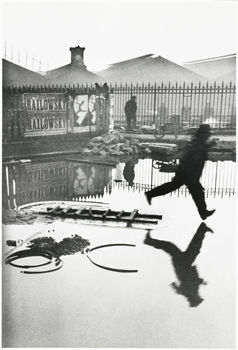
Place de l'Europe Gare Saint Lazare
Place de l'Europe is one of Cartier-Bresson's most successful images. The snapshot of a man gleefully hopping over a flooded area in Paris captures the moment just before the man's heel hits the water. The instant is filled with a sort of dynamic anticipation. A hazily-captured building in the distance contrasts with the richly ornamented, spiked fence and the two diverse elements combine in an alchemy of lines, curves, and reflections that creates the urban background for the jumper. Diagonal to the figure is a poster featuring a finely-drawn image of a female dancer leaping gracefully into the air. The poster for a circus called "Railowsky" is a visual play on the jumper's stiff stride that extends in a blur across the picture frame.
The spontaneity of the photo, which was captured in the bustling urban space, the Place de l'Europe outside of the busy Paris train station of Saint Lazare, epitomized the new, fast-paced environment in Europe with its trains, cars, and factories. Modern motion is celebrated by the fact that it is forever stopped, the leaping man will never hit the puddle, the split-second image is permanently frozen in time. The improvements in camera technology allowed for such images to be made and this progress is celebrated in Cartier-Bresson's photographs.
The iconic railway served as the setting for many famous 20th-century painters such as Manet, Caillebotte, and Monet, all of whom had been influential in Cartier-Bresson's own artistic development. This photo would also come to embody what he later described as the "decisive moment" - that instant a photographer decides to press the shutter and the event it memorializes.
Place de l'Europe is one of only a few photographs that Cartier-Bresson ever chose to crop. Ordinarily, he avoided adjusting his work after originally framing a shot and instead embraced unmediated chance encounters, an aesthetic preference and practice that made him one of the founders of street photography. A fragment of the fence that he is behind can be seen in the original shot and partially obscures the view.
Gelatin silver print - The Museum of Modern Art, New York, New York
Hyéres, France
Hyéres, France is an example of Cartier-Bresson's commitment to a sense of geometry and order. The stair rail leads the viewer's eye spiraling down to the street where the cyclist is frozen in the exact void between the building and the stair railing. The combination of architectural elements and the blurry image of the biker emphasize movement through their spirals, curves, and slight distortion. Cartier-Bresson's taste for construction through a tight, clear system of carefully ordered forms stemmed from his art teacher, Lhote, who was a Cubist painter. Paired with the aid of his Leica, Cartier-Bresson discovered the possibility of creating geometrical constructions in photography, structures that were enclosed within a perfect proportion (2:3) of the frame.
Cartier-Bresson took Hyéres while on vacation in the Cote d'Azure region. In what became his trademark style of casually walking around town looking for subject matter or perching in opportune vantage points, he chose a spot at the top of a staircase from which he could peer down on a small turn in the road. With this image, he succeeded in capturing what the Surrealist Andre Breton described as the consummate photograph: when '"shadow and prey mingled in a unique flash."
Gelatin Silver Print - The Museum of Modern Art, New York, New York
Seville, Spain
This photograph captures a group of children playing in the rubble in Seville, Spain. Framed by the empty, bombed-out section of a wall, the children interact joyfully and uninhibitedly among the ruins and desolation, in a space that is profoundly unchildlike. They are completely unaware that they are being observed. The ragged edges of the white, stuccoed wall could just as easily be the very surface of the photograph tearing open and inviting the viewer to look on undiscovered. The ambiguity of the picture space is a testament to Cartier-Bresson's engagement with Surrealism, of which visual puzzles were a major feature.
Cartier-Bresson was aware that, if the subjects in the snapshot knew they were being photographed, spontaneity would be compromised. In order to avoid being detected, he painted the shiny parts of his Leica black so as not to draw attention to himself. The voyeuristic nature of the photographer's vantage point - peering at the children from beyond the bombed-out wall - adds a more complex, psychological dimension to the image: the children become, in a sense, actors on a stage. The play itself seems completely incongruous with the set.
Gelatin Silver Print - The J. Paul Getty Museum, Los Angeles, California
Natcho Aguirre, Santa Clara
This photograph, shot during a trip to Mexico in 1934, exemplifies the heavy influence of Surrealism on Cartier-Bresson's work, an influence that endured, resurfacing at times as late as the 1960s. In the late 1920s, the young artist had spent time at the cafés on the Place Blanche in the bohemian area of Montmartre in Paris. While he admitted that, at the time, he had been "too shy and too young to talk," he absorbed a great deal and retained some of the major themes of the Surrealists such as bodies deformed or in fragments - disembodied limbs, heads, torsos, mannequins, wrapped or otherwise obscured objects, and often bizarre juxtapositions of unrelated objects.
Like the Surrealist painters, Cartier-Bresson's Surrealist photographs are perplexing and, in some cases, disturbing visual games intended to provoke the subconscious mind to make connections that are deeply personal. The erotic nature of this work, captures the "convulsive beauty" espoused by Surrealist leader, Andre Breton. The half-naked man who seems to be writhing free of the remainder of his clothing could be contorting himself in either agony or ecstasy - the ambiguity is what makes the image, at least in part, so deeply unsettling. There is something Christ-like in the crossed arms, conveying suffering or conversely, a peculiar sort of intimate, self-embracing.
Inexplicably, the shoes take on a significance because of their displacement. Cast off and ordinary, in the context of this image, juxtaposed with the mysterious male torso, there is no logic to their inclusion in the composition. Indeed, the uncanny juxtaposition was a hallmark of Surrealism that Cartier-Bresson found irresistible.
Gelatin Silver Print - The Metropolitan Museum of Art, New York City, NY
Juvisy, France
Cartier-Bresson's early exposure to and education in painting heavily informed the way he viewed the world and conceived of photographic composition. Juvisy depicts two couples picnicking on the banks of the Marne river on a warm summer's day, a scene that had become almost ubiquitous in Impressionist paintings. The elevated vantage point of the photographer-observer, at the top of the steep riverbank, initiates a kind of cascading visual effect as he glances down at the picnickers who in turn look down toward the boat as it rests on a river mirroring the sky.
The cascading or layered visual effect of the photograph is echoed in the narrative. On the surface, Cartier-Bresson is depicting a familiar trope from the history of art and, in particular, the recent Impressionist movement: people engaged in leisure activities in the Parisian countryside. However, as is often the case with his work, the photographer also engages with the social and political: at the time Juvisy was made, French workers were involved in a campaign to win more vacation time. Cartier-Bresson had in fact been sent on assignment by the left-wing Paris newspaper, Ce Soir, to document the workers' movement. This photograph was never published in the newspaper, but it is now considered one of Cartier-Bresson's most classic images.
Gelatin Silver Photograph - National Gallery of Victoria, Melbourne, Australia
Birla House, India
Birla House, India documents a visibly shocked Prime Minister of India, Jawaharlal Nehru, announcing the death of Mahatma Gandhi to the crowd outside his home. It was an extremely challenging shot for Cartier-Bresson who never used a flash. The dramatic lighting aids in relaying the gravity of the historic speech and the pathos of the moment: the outline of Nehru's head is illuminated while his face remains obscured by shadow; the British officer sitting next to him is similarly lit. The multiple light sources, whose beams cross one another and clash, create a kind of chaotic, layered image that evokes the confusion of that eventful moment.
The photograph is as much a document of Cartier-Bresson's sudden awareness of the historical import of the event and, moreover, of the particular moment it captures: the independence of India from British colonial rule and the tragedy of Gandhi's death. It is a psychological portrait of the photographer and of the nation as a whole in addition to functioning as a visual historical document.
He covered Gandhi's funeral and was one of the last people to speak with him before he died -little more than an hour before he was shot and killed. In fact, his photos are the last ones ever taken of Gandhi. His wife, Mohini, who was friends with the ill-fated Indian Prime Minister's sister, had arranged for Cartier-Bresson to meet with Gandhi in his compound.
Gelatin Silver Print - Henri Cartier-Bresson Foundation - Paris, France
Shanghai, China
Cartier-Bresson captures the chaos of the turbulent transition years of 1948-49 in Shanghai. Life magazine sent Cartier-Bresson to China to document the civil war and unrest that accompanied the political transition from the Chinese National Party, Kuomintang, to Communist rule under Mao Zedong and the People's Liberation Army. At the time, the value of paper money plummeted and the Kuomintang decided to distribute 40 grams of gold per person to stave off even worse civil unrest. In this deeply unsettling image, frantic Chinese citizens have lined up to sell their gold before Mao Zedong's revolution could render even the reliable currency of gold obsolete and impoverish them further.
In the photo, the subjects stand together in a crush of bodies whose desperation fuses them into a single mass. The group stands in for the millions of Chinese citizens who queued up throughout the country. Cartier-Bresson has framed the photograph so that, while only a small portion of the crowd that had amassed can be seen, the viewer can easily imagine the crush of bodies beyond the confines of the picture's borders. The claustrophobic character of this image, captured so succinctly by Cartier-Bresson is all too real as the photo was taken before ten lives were lost in the suffocating crush. As a photographer in the Realist tradition, he imbues the image with his own humanist sensibility, combining social commentary with his own striking sense of candor.
Gelatin Silver Print - Met, New York, New York
New York
Cartier-Bresson photographed the taping of a T.V. game show called, To Tell the Truth, one of several question-and-answer televised contests popular with audiences in the late 1950s.
New York, relying on the centuries old painting trope of "a picture within a picture," presents three separate stories in a single image. The television in the foreground represents the contestant as the viewer at home sees him on their television. Behind the T.V., on an elevated podium, an emcee describes the contestant's actions to home viewers and the studio audience. In the background, three men occupy a stage that can only be seen by the studio audience. The multiple layers of both perspective and representation he creates emphasize the capacity of the camera - whether in motion or still - to manipulate the viewer and, in this instance, create varying versions of the "truth." New York confronts issues of subjectivity and veracity, as do many of the films Cartier-Bresson made after WWII. He was fascinated with the new technology of live television broadcasting and combines technological layers in this single, complex image.
Gelatin Silver Print - Henri Cartier-Bresson Foundation - Paris, France
Alberto Giacometti, Maeght Gallery, Paris
This photo reveals Cartier-Bresson's witty side. In this portrait of his friend, the Swiss painter and sculptor, Alberto Giacometti, taken in the Maeght Gallery, the artist unconsciously mimics the subjects of his own work. Giacometti, no more demonstrative than his sculpted companions, carries yet a smaller sculpture whilst clenching a cigarette between his teeth. Giacometti's angled posture echoes the slanted stances of his two most famous statues. Cartier-Bresson manages to convey his friend's characteristic nervousness at the same time that he imposes a sense of elegance on this scene: the figures move in tandem, there is a kind of partnership brought about by resemblance between the artist and his works.
The photo actually documents a busy Giacometti installing the exhibition showcasing the two celebrated sculptures, Grande Femme Debout (Large Standing Woman) and L'Homme Qui Marche (Walking Man). Although Cartier-Bresson produced portraits of other successful artists of the period such as Matisse, Picasso, and Dalí, among others, he and Giacometti had been friends since the mid-1930s and enjoyed a particularly close relationship, which included a shared inexhaustible curiosity concerning the human condition.
Gelatin Silver Print - Henri Cartier-Bresson Foundation, Paris, France
Biography of Henri Cartier-Bresson
Childhood
Born in Chanteloup-en-Brie, France in 1908 to a wealthy textile merchant, Henri Cartier-Bresson was the eldest of five children. His mother, Marthe, exposed him to the arts including taking him on trips to the Louvre in Paris, attending chamber music concerts, and regularly reading him poetry. His father, Andre, was a severe man, consumed with the role of paternal duty and dedicated to his successful textile business. In response to his father's defection to the world of business, Henri vowed at an early age never to follow in his father's footsteps.
Painting captured the interest of Cartier-Bresson when he was just five years old. His uncle, Louis, was an accomplished painter and winner of the Prix de Rome in 1910. The two spent many hours in Louis's studio together and Henri began referring to his uncle as his "mythical father." Cartier-Bresson's apprenticeship in his uncle's studio ended abruptly and tragically when Louis was killed in the Great War; the young Cartier-Bresson also lost his two brothers to that war.
Henri continued painting on his own and, between painting and reading, found a means of escape from the turmoil of the real world. Eventually, his parents hired two art tutors to instruct him while he attended Catholic school. Although photography was not yet of particular interest to Cartier-Bresson at that time, he watched several films, including seminal ones by D.W. Griffith and Erich von Stroheim, which would prove to be critical sources of inspiration when he began producing his own films following WWII.
Early Training
Despite his father's aspirations for his son to attend the most prestigious French business school, Cartier-Bresson failed the baccalaureate entrance exam three times. Instead, in 1926 he left home to study at the private art academy of the French Cubist sculptor and painter, Andre Lhote, in Montparnasse. Lhote advocated combining the aesthetic of the Cubists with the technical conventions of French neoclassical painters like Poussin and David, which he thought would link modernism to tradition. Lhote and his students made frequent trips to the Louvre to study the works of Old Masters and the works of Renaissance notables like Jan van Eyck and Piero della Francesca impressed the budding young painter. Those experiences contrasted with the students' visits to galleries around Paris where they absorbed contemporary art. Combining the best of the old and the new, Lhote became for Cartier-Bresson a teacher of "photography without a camera". He also studied portrait painting for a short time with Jacques-Emile Blanche, the society portraitist.
Cartier-Bresson spent a year - from 1928 to 1929 - studying art and literature and also English at Magdalene College at the University of Cambridge in England. In 1930, he was forced to leave his studies when he was conscripted into the French army and station at Le Bourget just outside of Paris. Back in France, he was introduced to important contacts in French art circles, including Surrealist writer, Rene Crevel, by his former art tutor. The two hit it off and Crevel and Cartier-Bresson soon frequented the buzzing Parisian café scene and reveled in the exciting nightlife of the capital city with other Surrealists. Henri was attracted to Crevel's well-known nihilism, his air of rebellion, and his dedication to the philosophy outlined in the Surrealist manifesto. Surrealism's spontaneous expression and reliance on intuition enticed Cartier-Bresson to add such ideas to his own experiments. Through Crevel, Cartier-Bresson met Surrealism founder, André Breton, as well as Max Ernst, Marcel Duchamp, and Man Ray. During that period, Cartier-Bresson had also become intrigued with contemporary philosophy and literature and read avidly works by thinkers like Schopenhauer, Nietzsche, Dostoevsky, Rimbaud, Proust, Mallarme, Freud, Marx, and Engels.
Cartier-Bresson was certainly attracted to Surrealism, and the ideas and personalities in the movement intrigued him greatly. But ultimately, he decided to follow colleagues Robert Capa's advice: "Watch out for labels. They're reassuring but somebody's going to stick one on you that you'll never get rid of - 'the little surrealist photographer.' You'll be lost - you'll get precious and mannered. Take instead the label of 'photojournalist' and keep the other thing for yourself, in your heart of hearts."
In 1931, after fulfilling his military obligations, during which time he had read Joseph Conrad's novel, Heart of Darkness (1899), Cartier-Bresson traveled to the Cote d'Ivoire in French colonial Africa with the notion of escaping the strictures of city life and having an adventure. He survived by hunting, shooting game and then selling the meat to villagers. Having acquired a camera before leaving for Africa, Cartier-Bresson took photographs with his second-hand Krauss camera. His year-long adventure ended when Henri contracted blackwater fever, a parasitical disease that nearly killed him. His condition worsened to the extent that he sent a postcard to this family outlining his last wishes.
Cartier-Bresson returned to France in 1931, recuperating first in Marseille. By chance, he saw the photograph Three Boys at Lake Tanganiyka (c. 1929) by the Hungarian photographer, Martin Munkacsi, of three boys running naked into waves on an African beach. The image of their silhouetted bodies captured a moment in time so strikingly that Henri was inspired to pursue photography with a seriousness that had been absent in his previous dabbling with the medium. He recalled the experience, saying, "I suddenly understood that photography can fix eternity in a moment. It is the only photo that influenced me. There is such intensity in this image, such spontaneity, such joie de vivre, such 'miraculousness', that even today it still bowls me over."
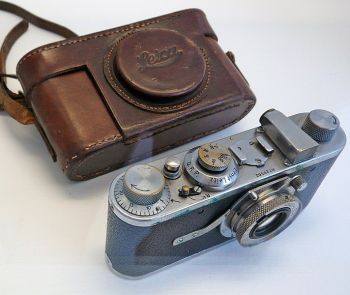
A year later Cartier-Bresson bought his first Leica camera. The camera was new to the market and it helped facilitate the impromptu nature of his approach to photography with its small size and portability, allowing him to act quickly, to capture candid images of his subjects without being overly intrusive. From 1932 through 1933, he travelled across Europe and Africa with his camera in the company of friends and then wandered in Mexico for much of 1934. While a good number of the photographs he produced during that three-year period were commissioned for publications, Cartier-Bresson had also begun compiling a portfolio for exhibition.
Mature Period
Cartier-Bresson briefly set aside photography to become a film director. Just before WWII, he travelled to New York where he spent a year learning the principles of montage from the modernist photographer Paul Strand and had his first photography exhibition at the Julien Levy Gallery in 1935. He returned to Paris in 1936 determined to capture Europe's worsening political climate in moving images. After GW Pabst and Luis Bunuel turned down his offers of help, he joined Jean Renoir to work on a propaganda film for the communist party. The film, La vie est à nous (Life is Ours) (1936), attacked the leading families who controlled France. A subsequent Renoir film, La Regle du Jeu (The Rules of the Game) (1939), in which Cartier-Bresson played an English butler, now a classic, was a satirical comedy examining the relationships between aristocrats and their servants. Cartier-Bresson subsequently made three documentaries in support of Republican Spain. In 1937, he returned to photography when he joined the staff of the newly founded communist newspaper, Ce Soir, alongside Robert Capa and David "Chim" Seymour.
With the onset of WWII, Cartier-Bresson joined the French military as a photographer. That same year, he was taken prisoner and sent to a German labor camp. After spending a terrible three years in the camp, he escaped on his third attempt. He returned to the farm in Vosges where he had previously buried his Leica, dug up the camera, and then remained there until the end of the war. At the farm he met his first wife, Ratna Mohini; he also continued underground resistance activities with the National Movement of War Prisoners and Deportees (MNPGD) with the farm as his home base. Once the announcement came over the radio that the Allied forces had landed in Normandy, he traveled with Capa to Paris to cover the city's liberation from German occupation. Capa had taken some of the most emblematic photographs of the Allied invasion on D-Day on Omaha Beach and, perhaps, of World War II overall that are titled The Magnificent Eleven. In fact, the two men were responsible for providing some of the most memorable images of the death throes of the devastating war. Cartier-Bresson later created a film on the return of French prisoners of war entitled, Le Retour (1946). Between them, Cartier-Bresson and Capa defined wartime photojournalism.
In 1947, Cartier-Bresson co-founded Magnum Photos along with fellow photographers Capa, Seymour, and George Rodgers. The agency helped protect the interests of the photographers, the rightful owners of their negatives and all reproduction rights. The founding members of Magnum divided and travelled the world with Cartier-Bresson documenting Asia. No longer working under contracts for magazines, Cartier-Bresson had to seek out work on his own. His political involvement was firmly to the left and he was dedicated to journalistic photography, particularly in the interest of the communist press. His work while in Asia included documentation of the communist transition in China, the partition of Pakistan, and Mahatma Gandhi's death. By 1950, he had been awarded the US Camera Prize for best reportage of the year for his coverage of Gandhi and another award from the prestigious Overseas Press Club for his pictures taken in Nanking and Shanghai.
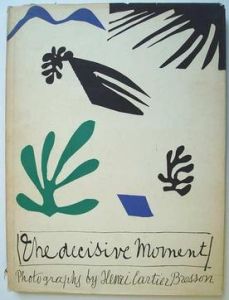
One of the most defining events of his career was the publication a book of his own work called The Decisive Moment, in 1952. The book's cover was designed by his friend, Henri Matisse, and the 126 photos it featured drew from his growing portfolio of images from across the world. He explained how he had arrived at the title by quoting 17th-century cleric and political agitator, Cardinal de Retz: "Il n'y a rien dans ce monde qui n'ait un moment decisif" ("There is nothing in this world that does not have a decisive moment"). Far more than merely the title of his first major publication, the phrase became his aesthetic raison d'être. He explained, "To me, photography is the simultaneous recognition, in a fraction of a second, of the significance of an event as well as of a precise organization of forms which give that event its proper expression."
The Decisive Moment book was the culmination of Cartier-Bresson's efforts with his friend E. Teriade. Teriade was a successful fine art book publisher that had previously put together impressive books for Giacometti, Picasso, Matisse, and others. By working together, Teriade elevated Cartier-Bresson's photographs from photojournalism to art, potentially from low to high art. Teriade planned to publish multiple books with Cartier-Bresson and other important photographers - but the second world war only allowed him to publish one other book with Cartier-Bresson: The Europeans (1955).
By the time of his first exhibition in France in 1955, held at the Pavillion de Marsan in the prestigious Louvre Museum in Paris, Cartier-Bresson had acquired international acclaim, not the least for his candid portraits of notables such as William Faulkner, Truman Capote, Man Ray, Marcel Duchamp, and many others. His second wife later recalled that his popularity as a portraitist and ability to get the most out of each situation was the key to his success. He never refused being introduced to anyone, he always had sensitivity to whoever he spoke with (whether a ruler or a pauper), and ultimately he was very connected to many important people; all these attributes allowed him access to photos that no other photographer could match. For the next 10 years he continued to travel the world, often in the context of war or its terrible aftermath, from Mexico, the U.S., China, Japan, India, and the Soviet Union. In addition, he had the unique distinction of being the first Western photographer to take photographs in the Cold War-era Soviet Union.
Late Period
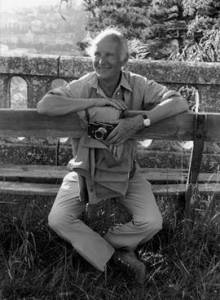
In 1966, Cartier-Bresson left Magnum and retired from photography. In 1970, he divorced his longtime wife to marry fellow photographer, Martine Frank. The couple had a daughter named Melanie. Henri no longer traveled the globe, but instead devoted himself to being a father.
In the 1970s, Cartier-Bresson retired from photography and even stopped taking photos altogether aside from producing a private portrait now and then. In fact, he stopped carrying around his camera, which had been like an extension of his body for much of his adult life; he kept the camera in a safe where it remained, little used, in the last years of his life.
He also began painting again, applying an aesthetic honed over a lifetime of producing primarily photographs. Towards the end of his life, Cartier-Bresson even developed a reluctance to even discuss photography, the medium that had been his life's work. Always one to shy away from being photographed himself, Henri also shunned interviews and wished to have no part in being a curator, archivist, or even a commentator on his own photography. In 2003, he created the Henri Cartier-Bresson Foundation with his wife and daughter. On August 3, 2004, he died in Cereste, France.
The Legacy of Henri Cartier-Bresson
Nothing captures the essence of Cartier-Bresson's work more precisely than the concept of "the decisive moment." Since its invention, the potential of photography had been debated and the divide between "art" and "documentary" photography seemed intractable. Combining his affinity for the disciplined painting of the great masters with his interest in Surrealism and modern philosophy plus his thirst for adventure and desire to be in the thick of current events. Cartier-Bresson used photography to create visual documents of remarkable spontaneity. As he refused to alter his images after snapping a photo, including foregoing cropping , while often artfully framed, seem to bring together the two possibilities of photography: art and visual documentation.
One of the versatile photographer's greatest achievements was detaching himself from his reliance on magazines for commissions, which could be restrictive from a professional perspective. With commissions, artistic license was often quite constrained and subject matter was dictated by the nature of a given commission. Co-founding Magnum allowed him to continue his efforts at photojournalism but choosing his own subjects instead of accepting assignments; at the same time, he was then free to pursue photography for its artistic possibilities. Cartier-Bresson, who considered himself a photojournalist and is regarded as one of the true pioneers of street photography, was capable of producing acutely modern compositions. The variety in his oeuvre is vast; his career was in some ways one long experiment that inspired photographers as diverse as Helen Levitt, Robert Frank, Diane Arbus, and Lee Friedlander.
Influences and Connections

Useful Resources on Henri Cartier-Bresson
- Henri Cartier-Bresson: The Modern CenturyOur PickBy Peter Galassi
- Henri Cartier-Bresson: Here and NowBy Clement Cheroux
- Henri Cartier-Bresson: The Decisive MomentOur Pick
- Henri Cartier-Bresson: The Mind's Eye: Writings on Photography and Photographers
- Henri Cartier-Bresson: Mexican Notebooks 1934-1964
- Henri Cartier-Bresson: Photographer
